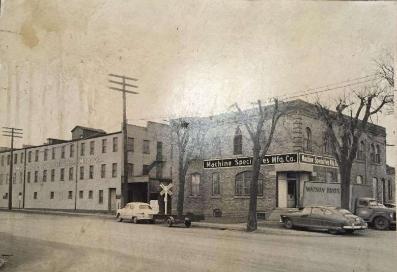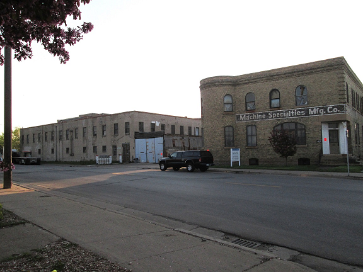The C.A. Smith Lumber Historic District reflects the industrial history of the Camden neighborhood. It was built during the last stage of Minneapolis’ impressive lumber industry.
Charles A. Smith was born in Sweden in 1852 and immigrated to the U.S. in 1867. He attended Minneapolis public schools and the University of Minnesota. He worked at John S. Pillsbury’s hardware store until 1878. Charles moved to Hermann, Minnesota, for several years to sell grain and farm machinery and manage a lumber yard.
Charles returned to Minneapolis in 1884 and entered the lumber wholesaling business. In 1892, Charles established his lumber operations on 20 acres next to the Mississippi River in North Minneapolis. He built a factory building in 1892 and a sawmill in 1893. The company employed 800 men at any given time and produced 750,000 board feet per day. The complex continued to expand in the early 1900s. In 1903, the Queen Anne-style office building was constructed.
Charles also secured the patent for a new composite material called Compo Board in 1892. He formed another company, Northwestern Compo Board Co., to produce it at his lumber site. Minnesota’s reserves of white pine were exhausted after 1910, which led to the closure of the sawmill in 1912. However, they continued to produce Compo Board here until 1939.
Arno Mereen and Charles Johnson worked as foremen at C.A. Smith Lumber. They patented a horizontal band re-saw for producing shooks, which were a specific kind of shipping boxes. They formed the Mereen Johnson Machine Company, with Charles Smith as an investor. They built their facilities on the C.A. Smith Lumber site, including a factory building in 1916 and an office building in 1917.
The original site was larger than what remains today. In the mid-1920s, the former lumber yards west of Lyndale Avenue were developed as residential properties. In 1984, Interstate 94 was extended over the portion of the site near the Mississippi River.



